Request Demo
Last update 08 May 2025

Serimmune, Inc.
Last update 08 May 2025
Overview
Related
100 Clinical Results associated with Serimmune, Inc.
Login to view more data
0 Patents (Medical) associated with Serimmune, Inc.
Login to view more data
21
Literatures (Medical) associated with Serimmune, Inc.22 Mar 2024·Cancer Research
Abstract 1056: Development of a B-cell epitope classifier for early detection of renal cell carcinoma
Author: Fan, Alice C. ; Leppert, John T. ; Alli, Elizabeth ; Hoerner, Christian R. ; Campbell, Thomas W. ; Shon, John C.
01 Mar 2022·Proceedings of the National Academy of SciencesQ1 · CROSS-FIELD
Lack of association between pandemic chilblains and SARS-CoV-2 infection
Q1 · CROSS-FIELD
Article
Author: Antaya, Richard ; Shepard, Denise ; Bermejo, Santos ; Askenase, Michael H. ; Kim, Daniel ; Lu, Peiwen ; Klein, Rhonda Q. ; Sonnert, Nicole ; Wang, Eric ; Anastasio, Kelly ; Kamath, Kathy ; Silva, Erin ; Brito, Anderson ; Watkins, Annie ; Simonov, Michael ; Velazquez, Sofia ; Glick, Laura ; Wong, Patrick ; Handoko, Ryan ; Khoury-Hanold, William ; Strong, Yvette ; Ko, Albert I. ; Knaggs, Lynda ; Mao, Tianyang ; Song, Eric ; Damsky, William ; Kalinich, Chaney ; Nunez, Angela ; Peng, Xiaohua ; Jaycox, Jillian ; Batsu, Maria ; Ko, Christine J. ; Courchaine, Edward ; Valdez, Jordan ; Sewanan, Lorenzo ; Lim, Joseph ; Muenker, Cate ; Shon, John ; White, Elizabeth B. ; Prophet, Sarah ; McDonald, David ; Rahming, Harold ; Todeasa, Codruta ; Omer, Saad ; Nelson, Allison ; Lucas, Carolina ; Ugwu, Nelson ; Sharma, Lokesh ; Brower, Kristina ; Yildirim, Inci ; Martin, Anjelica ; Nakahata, Maura ; Lu-Culligan, Alice ; Petrone, Mary ; Emmenegger, Marc ; Kudo, Eriko ; Kuang, Maxine ; Naushad, Nida ; Matos, Irene ; Klein, Jon ; Nouws, Jessica ; DeIuliis, Giuseppe ; Ring, Aaron M. ; Mekael, Dilgash ; Jensen, Cole ; McNiff, Jennifer ; Bickerton, Sean ; Campbell, Melissa ; Iwasaki, Akiko ; Rose, Kadi-Ann ; Smolgovsky, Mikhail ; Geng, Bertie ; Little, Alicia J. ; Minasyan, Maksym ; Datta, Rupak ; Gehlhausen, Jeff R. ; Vijayakumar, Pavithra ; Linehan, Melissa ; Alpert, Tara ; Rice, Tyler ; Obaid, Abeer ; Patrignelli, Robert ; Yang, Yexin ; Fauver, Joseph ; Cao, Yiyun ; Harden, Christina ; Park, Hong-Jai ; Martinello, Rick ; Aguzzi, Adriano
20 Feb 2022·Journal of Clinical Oncology
Utilizing the autoantibody immune response to tumor antigens for kidney cancer early detection.
Author: Waitz, Rebecca ; Dhal, Abhilash ; Hoerner, Christian R ; Kamath, Kathy ; Fan, Alice C. ; Shon, John ; Zhang, Minlu ; Jhatro, Michael
9
News (Medical) associated with Serimmune, Inc.16 Jan 2024
DUBLIN--(
BUSINESS WIRE
)--The
"Parasitology and Mycology Rapid Tests and POC Pipeline Report including Stages of Development, Segments, Region and Countries, Regulatory Path and Key Companies, 2023 Update"
report has been added to
ResearchAndMarkets.com's
offering.
Parasitology & Mycology Pipeline Report provides comprehensive information about the Parasitology & Mycology pipeline products with comparative analysis of the products at various stages of development and information about the clinical trials which are in progress.
This report provides extensive coverage of Parasitology & Mycology under development, offering comprehensive insights into pipeline products, major players, developmental activities, clinical trial data, and recent developments in the segment/industry.
The report reviews the details of major pipeline products, including product descriptions, licensing and collaboration details, and other developmental activities related to Parasitology & Mycology. It also lists all the pipeline projects involving major players engaged in the development of Parasitology & Mycology. Coverage of pipeline products is based on various stages of development, ranging from Early Development to Approved/Issued stages, allowing readers to understand the progress of these products in the pipeline.
Key clinical trial data related to ongoing trials specific to pipeline products in the Parasitology & Mycology segment is provided, offering valuable insights into the clinical development of these products.
Reasons to Buy
Formulate significant competitor information, analysis, and insights to improve R&D strategies
Identify emerging players with potentially strong product portfolio and create effective counter strategies to gain competitive advantage
Identify and understand important and diverse types of Parasitology & Mycology under development
Develop market-entry and market expansion strategies
Plan mergers and acquisitions effectively by identifying major players with the most promising pipeline
In-depth analysis of the product's current stage of development, territory and estimated launch date
Key Topics Covered:
1 Table of Contents
1.1 List of Tables
1.2 List of Figures
2 Introduction
2.1 Parasitology & Mycology Overview
3 Products under Development
3.1 Parasitology & Mycology - Pipeline Products by Stage of Development
3.2 Parasitology & Mycology - Pipeline Products by Territory
3.3 Parasitology & Mycology - Pipeline Products by Regulatory Path
3.4 Parasitology & Mycology - Pipeline Products by Estimated Approval Date
4 Parasitology & Mycology - Pipeline Products under Development by Companies
4.1 Parasitology & Mycology Companies - Pipeline Products by Stage of Development
4.2 Parasitology & Mycology - Pipeline Products by Stage of Development
5 Parasitology & Mycology Companies and Product Overview
6 Parasitology & Mycology- Recent Developments
7 Appendix
A selection of companies mentioned in this report includes
Abacus Diagnostica Ltd
Access Bio Inc
Acobiom
Adaltis Srl
All India Institute of Medical Sciences
Antigen Discovery Inc
Applied BioCode Inc
Aptus Biotech SL
Attogene Corp
Auburn University
Axxin
Beckman Coulter Inc
BioSynesis Inc
Biotechnology Assets SA
Biotype Innovation GmbH
Cascade Biosystems Inc
Cepheid Inc
Cerebro Biosystems
Ceres Nanosciences Inc
Ellume Ltd
EUROIMMUN US LLC
FK-Biotecnologia SA
Foundation for Innovative New Diagnostics
Fungea AB
G Medical Health and Wellness
Genetag Technology, Inc
Gennova Biopharmaceuticals Ltd
Genome Diagnostics Pvt Ltd
George Mason University
Great Basin Scientific Inc.
HealthTell Inc
Immunetics Inc
InBios International Inc
Institute for Development Research
Johns Hopkins University
L2 Diagnostics LLC
London School of Hygiene & Tropical Medicine
Luminex Corp
Mahidol Oxford Tropical Medicine Research Unit
Masaryk University
Massachusetts Institute of Technology
McGill University
Meridian Bioscience Inc
Microbiologics Inc
MiraVista Diagnostics LLC
MND Diagnostic LTD
MycoDART Inc
Mylab Discovery Solutions Pvt Ltd
Nagasaki University
Nanosphere Inc (Inactive)
NextGen Invitro Diagnostics Pvt Ltd
Novacyt SA
Ohio State University
OpGen Inc
OPKO Health Inc
Oregon Health & Science University
Ortho Clinical Diagnostics Holdings Plc
Pai Life Sciences Inc
Paramedical Srl
Peruvian Cayetano Heredia University
Phagolum Ltd.
PixCell Medical Technologies Ltd
Praxis Pharmaceutical SAU
Proplex Technologies Llc
Qiagen NV
RealSeq Biosciences Inc
Roche Diagnostics International Ltd
Seegene Inc
Serimmune Inc
Siemens Healthcare Diagnostics Inc
T2 Biosystems Inc
Taizhou ZECEN Biotech Co Ltd
Techinvention Lifecare Pvt Ltd
The Walter and Eliza Hall Institute of Medical Research
Transfusion & Transplantation Technologies (Inactive)
University of California
University of Colorado
University of Edinburgh
University of Georgia
University of Grenoble Alpes
University of Oxford
University of Tennessee
Virginia Commonwealth University
Washington University in St Louis
Washington University School of Medicine
For more information about this report visit
https://www.researchandmarkets.com/r/djd3pp
About ResearchAndMarkets.com
ResearchAndMarkets.com is the world's leading source for international market research reports and market data. We provide you with the latest data on international and regional markets, key industries, the top companies, new products and the latest trends.
08 Nov 2023
Company to chair session on new vaccine development on Tuesday, November 14, 2023, at 3:20 p.m. ET
--(BUSINESS WIRE)-- WHAT: SerImmune will discuss its Serum Epitope Repertoire Analysis (SERA) platform and how it can be applied in various studies to gain insight into past and present humoral immune responses in individuals and cohorts. The new vaccine development session will be led by Dr. John Shon and will review how SERA allows for the detection of an unlimited number of B cell immune responses in a single assay, enabling comparative immunomics and precision immunology.
WHY: Individuals are exposed to a wide variety of environmental, infectious, vaccines and therapeutic agents stimulating humoral immune response. Whether studying longitudinal samples, novel formulations of vaccines or boosters, pre-clinical vs. clinical vaccine responses, or vaccine vs. natural infection, SERA enables comparative, high-throughput, high-resolution analysis of epitopes to enable precision immunology, supporting the next generation of vaccine development.
WHO: Serimmune and Vaccine Summit 2023 will bring together experts in the field of vaccine research as well as industry leaders to address current issues facing vaccine development. The “New Vaccine Development” session will be led by Dr. John Shon, Chief Technology Officer, Serimmune.
WHEN: “SERA: universal serology enabling high-throughput, antigen agnostic studies of adaptive immune responses” will be held Tuesday, November 14, 2023, at 3:20 p.m. ET / 12:20 p.m. PT.
WHERE: Vaccine Summit 2023 at the Sheraton Boston Needham Hotel, Grand Ballroom.
To register click here:
About Serimmune
Serimmune is a leader in understanding antibody repertoire and is focused on identifying and exploiting the universe of relationships between antibodies and antigens. The company’s Serum Epitope Repertoire Analysis (SERA) technology platform applies bacterial display peptide libraries, next generation sequencing, machine learning and custom bioinformatics to reveal the many diverse antigens stimulating immunity. Serimmune’s human immunity map is a growing database that can be interrogated to uncover disease information for the development of multiplex diagnostics, vaccines and therapeutics. The company was founded in 2014 and is backed by investors such as Illumina Ventures, LabCorp, and Merck. For more information visit serimmune.com or follow us on Facebook, Twitter and LinkedIn.
VaccineClinical StudyImmunotherapyAACR
03 Oct 2023
Mount Sinai-Yale Long COVID (MY-LC) study found key differences in the blood of Long COVID patients.
GOLETA, Calif.--(BUSINESS WIRE)-- SerImmune, a leader in understanding the antibody repertoire's role in human disease, announced today the publication of a study in Nature in which their proprietary Serum Epitope Repertoire Analysis (SERA) technology platform was one of the methods used to analyze the biological processes associated with the development and persistence of Long COVID symptoms, such as fatigue, brain fog and malaise. The cross-sectional study of 273 individuals, which included multi-dimensional immune phenotyping and unbiased machine learning, determined that there are significant biological differences in the blood of people experiencing Long COVID compared to the control group of those who are not, even after one year.
In the article titled, “Distinguishing features of Long COVID identified through immune profiling,” the authors describe how complementary approaches, including Serimmune's SERA platform and enzyme-linked immunosorbent assay (ELISA) were used to examine antiviral reactivity patterns in participants. The SERA platform was also used to analyze non-SARS-CoV-2 antigens. Findings from the study showed that individuals with Long COVID have elevated antibody responses directed against both SARS-CoV-2 and non-SARS-CoV-2 viral antigens, particularly Epstein-Barr virus (EBV) antigens.
A recent report from the Centers for Disease Control and Prevention (CDC) found that even though the rate of Long COVID is declining, one in four adults with Long COVID struggle to perform activities-of-daily-living. This impacts their quality of life, ability to work or provide care for others.
“The burdens of this disease are great and touch the lives of many of our families and friends,” said Malek Faham, MD, PhD, CEO of Serimmune. “We are driven to improve the way diseases like Long COVID are diagnosed and treated through our state-of-the-art immunology, next generation sequencing, bioinformatics and machine learning. We partner with academic institutions, biopharma, healthcare organizations and government so we can assist them with their immune-related research, product development and healthcare decisions.”
SERA is a universal serology platform that utilizes bacterial display peptide library technology and next generation sequencing to broadly pro repertoires and identify the antigens and epitopes associated with many diseases – all in a single assay.
About Serimmune
Serimmune is a leader in understanding antibody repertoire and is focused on identifying and exploiting the universe of relationships between antibodies and antigens. The company’s Serum Epitope Repertoire Analysis (SERA) technology platform applies bacterial display peptide libraries, next generation sequencing, machine learning and custom bioinformatics to reveal the many diverse antigens stimulating immunity. Serimmune’s human immunity map is a growing database that can be interrogated to uncover disease information for the development of multiplex diagnostics, vaccines and therapeutics. The company was founded in 2014 and is backed by investors such as Illumina Ventures, LabCorp, and Merck. For more information visit serimmune.com or follow us on Facebook, Twitter and LinkedIn.
ImmunotherapyClinical StudyClinical Result
100 Deals associated with Serimmune, Inc.
Login to view more data
100 Translational Medicine associated with Serimmune, Inc.
Login to view more data
Corporation Tree
Boost your research with our corporation tree data.
login
or

Pipeline
Pipeline Snapshot as of 14 Dec 2025
No data posted
Login to keep update
Deal
Boost your decision using our deal data.
login
or
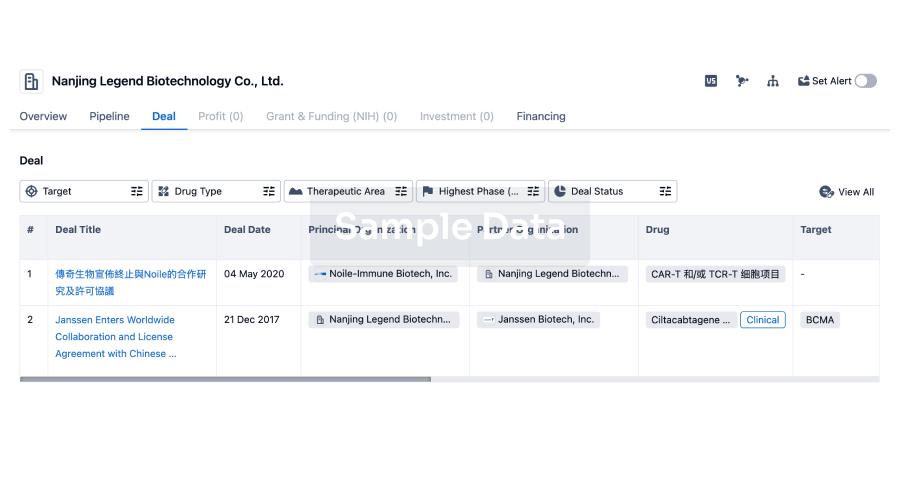
Translational Medicine
Boost your research with our translational medicine data.
login
or
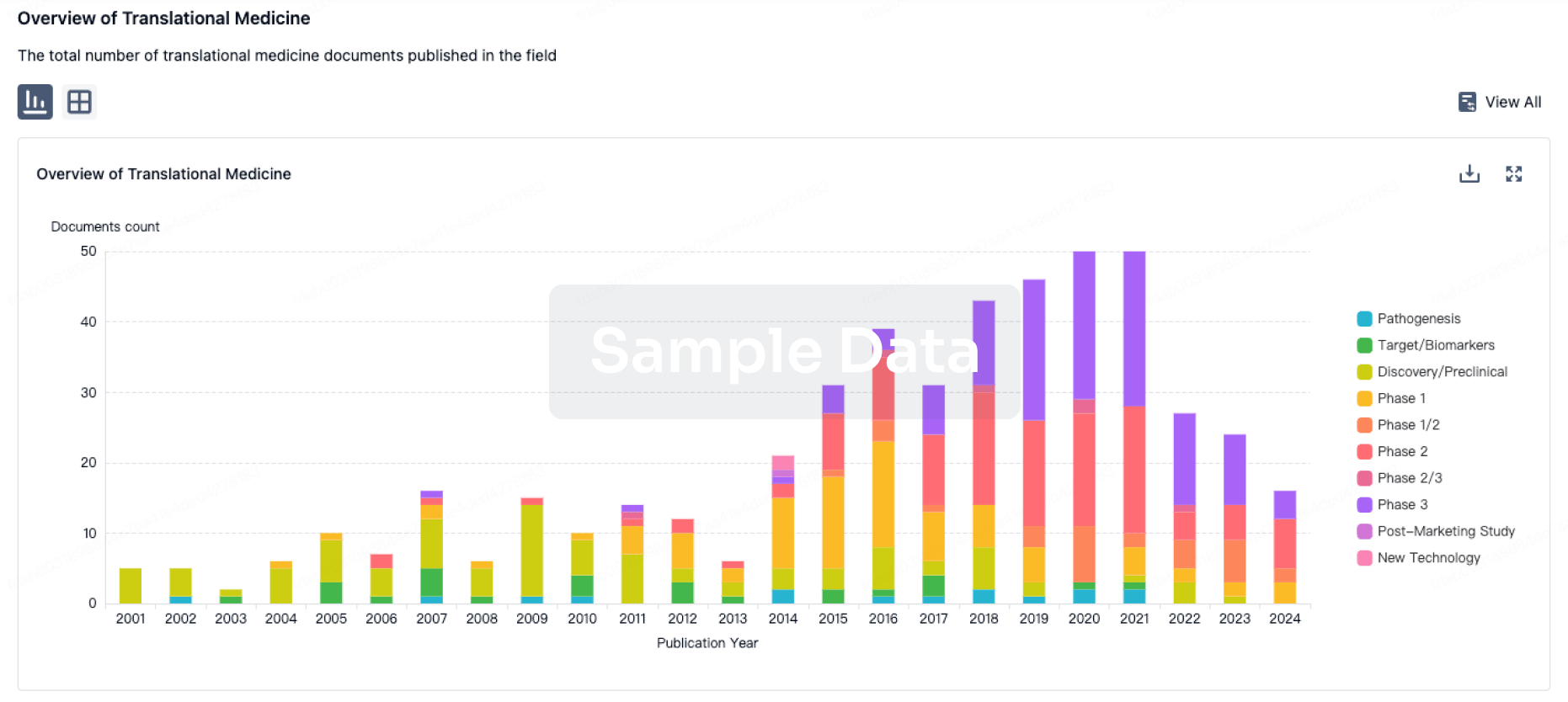
Profit
Explore the financial positions of over 360K organizations with Synapse.
login
or

Grant & Funding(NIH)
Access more than 2 million grant and funding information to elevate your research journey.
login
or
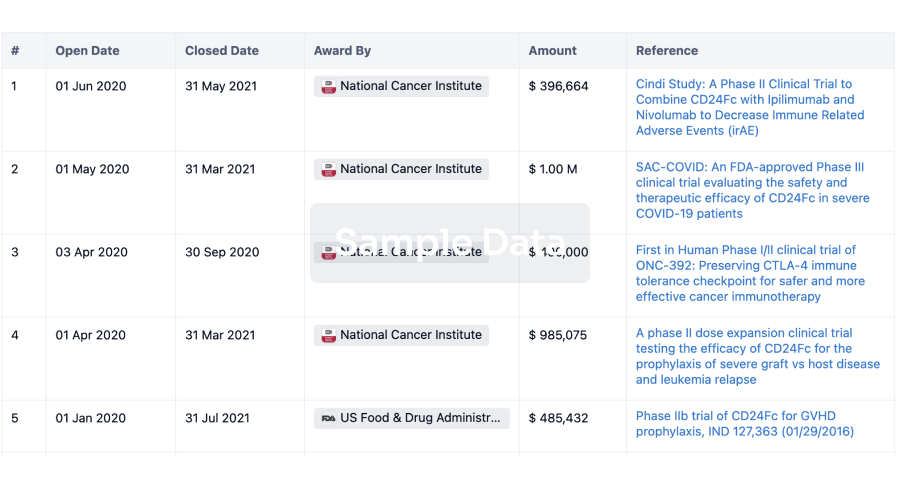
Investment
Gain insights on the latest company investments from start-ups to established corporations.
login
or
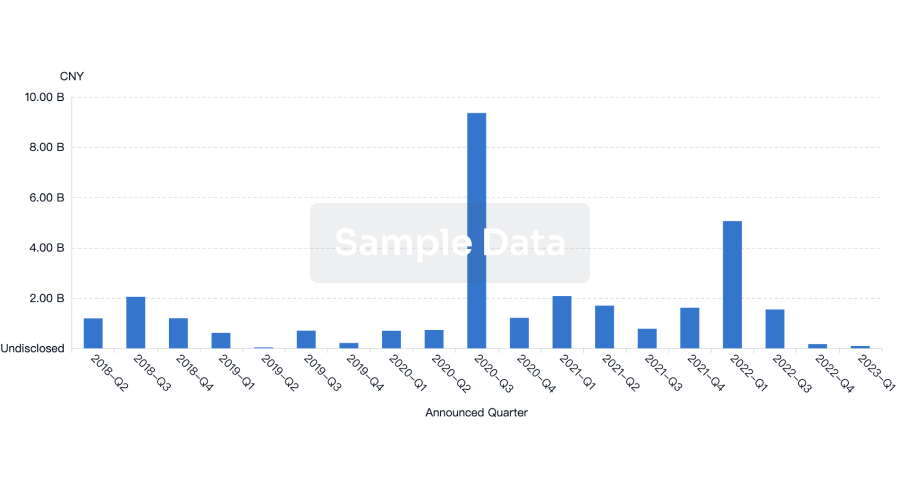
Financing
Unearth financing trends to validate and advance investment opportunities.
login
or
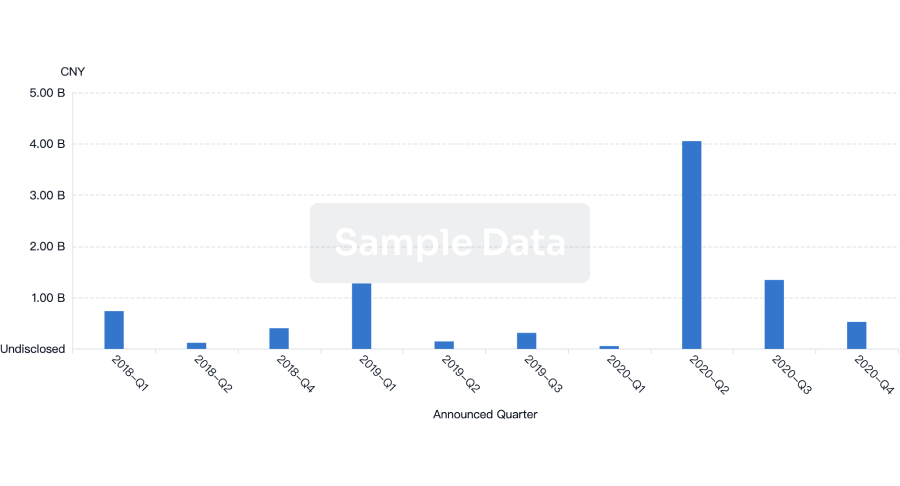
AI Agents Built for Biopharma Breakthroughs
Accelerate discovery. Empower decisions. Transform outcomes.
Get started for free today!
Accelerate Strategic R&D decision making with Synapse, PatSnap’s AI-powered Connected Innovation Intelligence Platform Built for Life Sciences Professionals.
Start your data trial now!
Synapse data is also accessible to external entities via APIs or data packages. Empower better decisions with the latest in pharmaceutical intelligence.
Bio
Bio Sequences Search & Analysis
Sign up for free
Chemical
Chemical Structures Search & Analysis
Sign up for free